Iceland sits beneath some of the darkest, clearest skies in Europe, where the aurora borealis dances above glaciers and volcanic peaks like nowhere else on Earth. The island’s sparse population and vast uninhabited landscapes create an astronomer’s paradise, with minimal light pollution extending across thousands of square kilometers.
Here’s a list of 16 extraordinary locations where Iceland’s epic night skies come alive, each offering its own unique backdrop for celestial viewing.
Jökulsárlón Glacier Lagoon
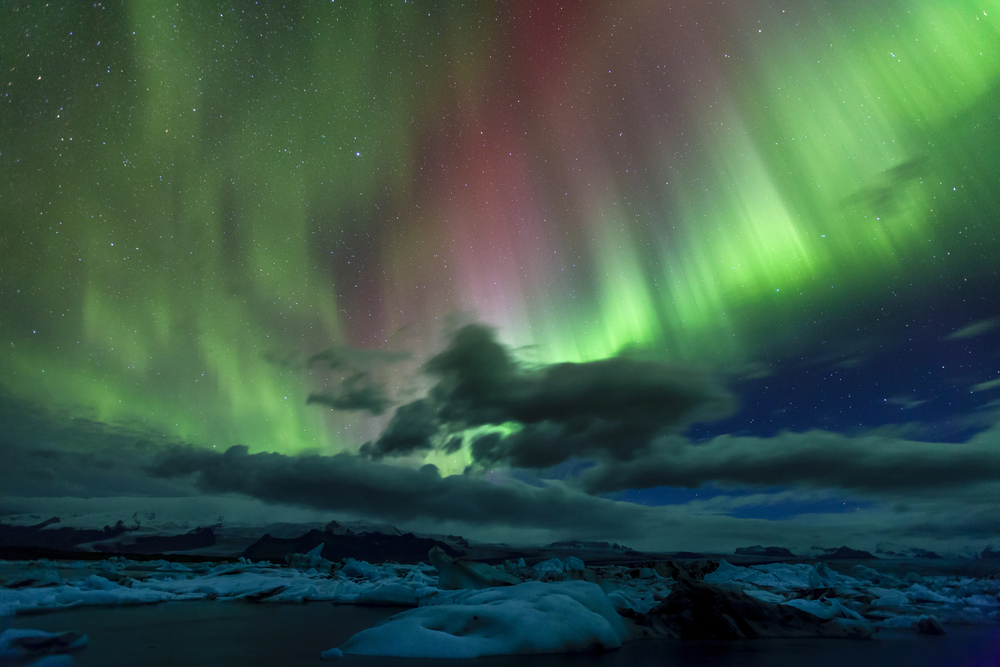
This glacial wonderland transforms into a stargazer’s dream when darkness falls. Massive icebergs drift silently across the black water while the Milky Way stretches overhead, creating reflections that blur the line between sky and sea. The lagoon sits 37 miles east of Skaftafell, accessible year-round via Route 1.
Winter visitors often witness the northern lights painting the ice sculptures in ethereal green hues. The contrast is surreal—ancient glacier ice below, infinite cosmos above.
Lake Mývatn
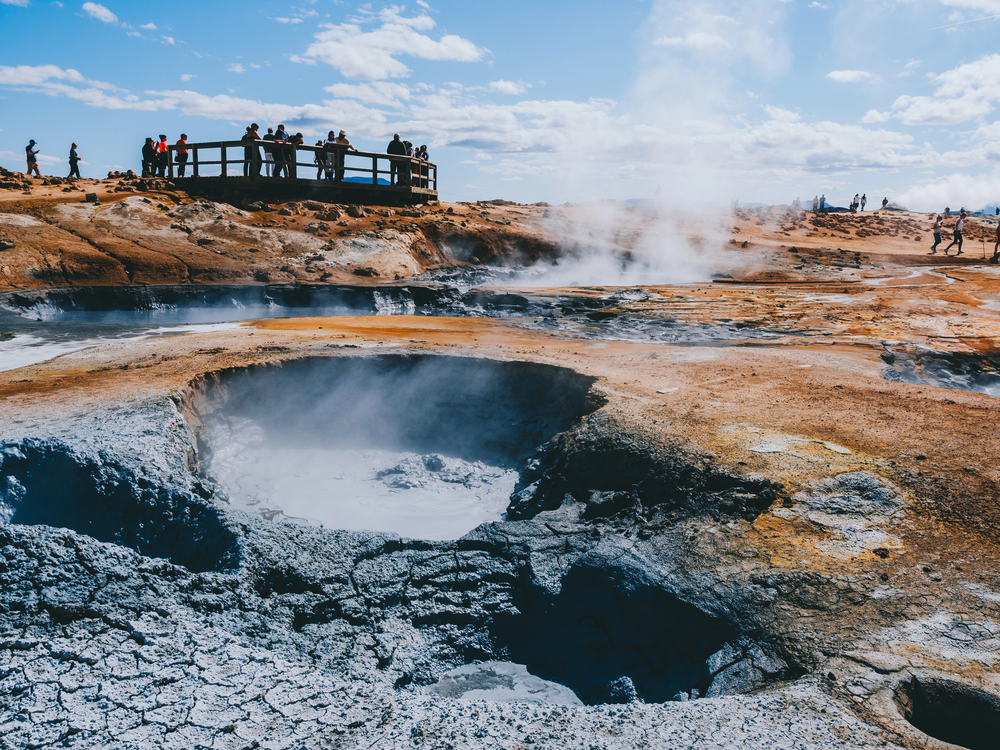
Known as Iceland’s “northern lights capital,” this expansive lake offers some of the country’s most reliable aurora viewing. The remote location near Akureyri provides pristine dark skies with minimal interference from nearby settlements.
Geothermal activity creates an otherworldly landscape of steaming vents and crater formations, and the lake’s reflective surface doubles every celestial display like nature’s own mirror. Ring Road access makes it surprisingly reachable despite its wilderness setting.
Þingvellir National Park
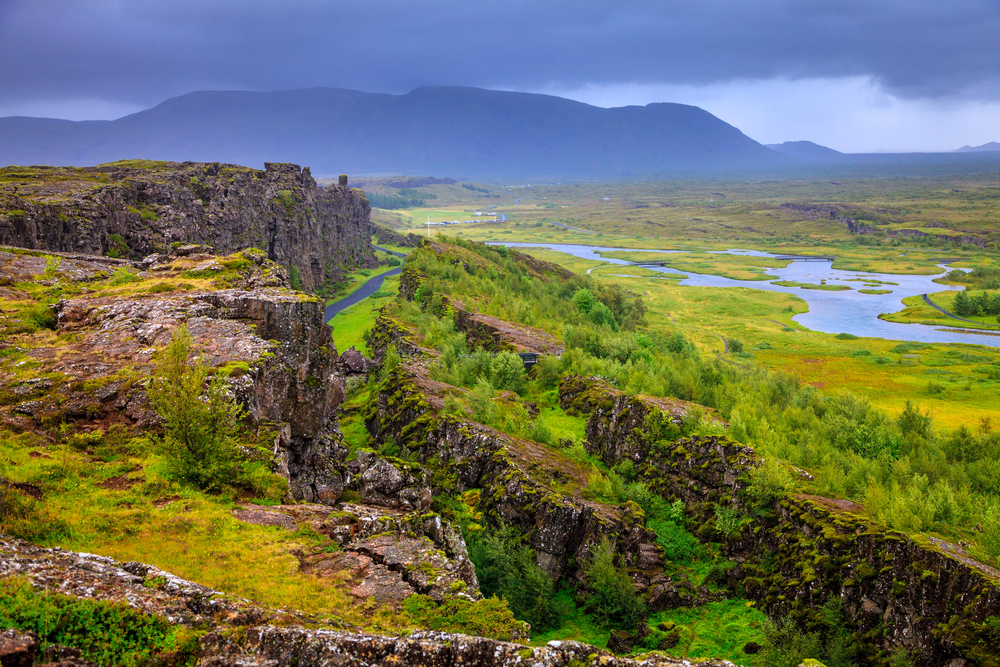
This UNESCO World Heritage Site delivers both historical significance and stellar astronomy conditions—quite literally where Iceland’s parliament met under the same stars for over a thousand years. The park sits in a rift valley between the North American and Eurasian tectonic plates, creating dramatic topography that frames the night sky. Its proximity to Reykjavik—just approximately 25 miles—makes it accessible for evening stargazing trips.
Clear winter nights reveal countless stars above the ancient parliamentary plains. The surrounding mountains provide natural wind protection.
Hotel Rangá Observatory
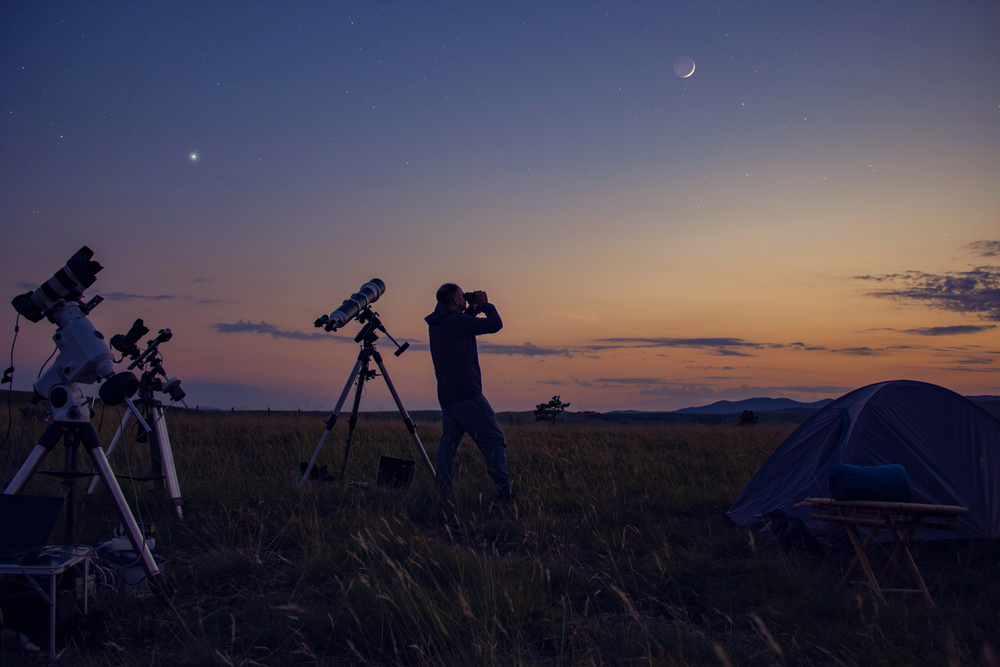
South Iceland’s luxury hotel houses the country’s largest telescope, creating a professional stargazing experience in the countryside. The hotel’s astronomer-in-residence provides guided tours of the night sky, pointing out constellations and planets invisible to most observers.
The observatory combines comfort with serious astronomy. Guests can warm up indoors between viewing sessions while maintaining access to pristine dark skies. Plus, hot chocolate by the telescope. What more could you want?
Westfjords wilderness
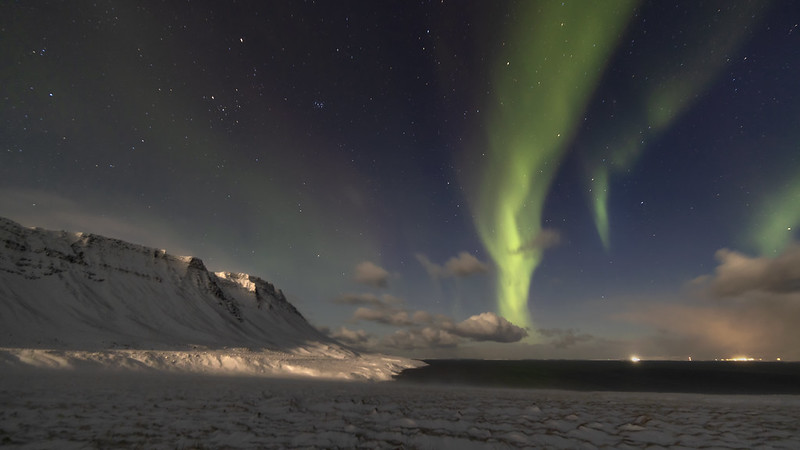
These remote fjords offer Iceland’s most isolated stargazing, far from any light pollution sources. The rugged coastline and dramatic cliffs create a raw, untouched setting where the Milky Way appears almost close enough to touch. Ísafjörður serves as the main access point, though true darkness requires venturing beyond town limits.
Winter conditions can be harsh here, but the payoff is extraordinary—some visitors report seeing more stars than they knew existed, which sounds like hyperbole until you experience it yourself.
Kirkjufell Mountain
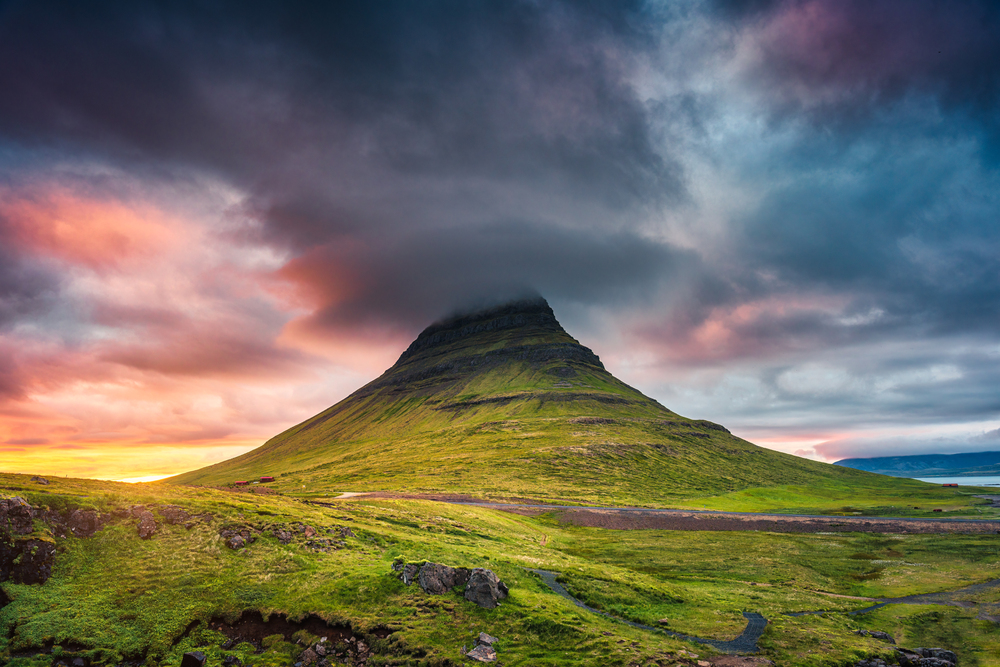
Iceland’s most photographed mountain becomes equally stunning after dark, especially when northern lights appear behind its distinctive peak. The nearby Kirkjufellsfoss waterfall adds foreground drama to night photography. This Snæfellsnes Peninsula location sits about two hours from Reykjavik via Ring Road.
The mountain’s isolated position minimizes light interference. Photographers often capture the aurora reflecting in the waterfall’s pools below the iconic summit.
Grotta Lighthouse
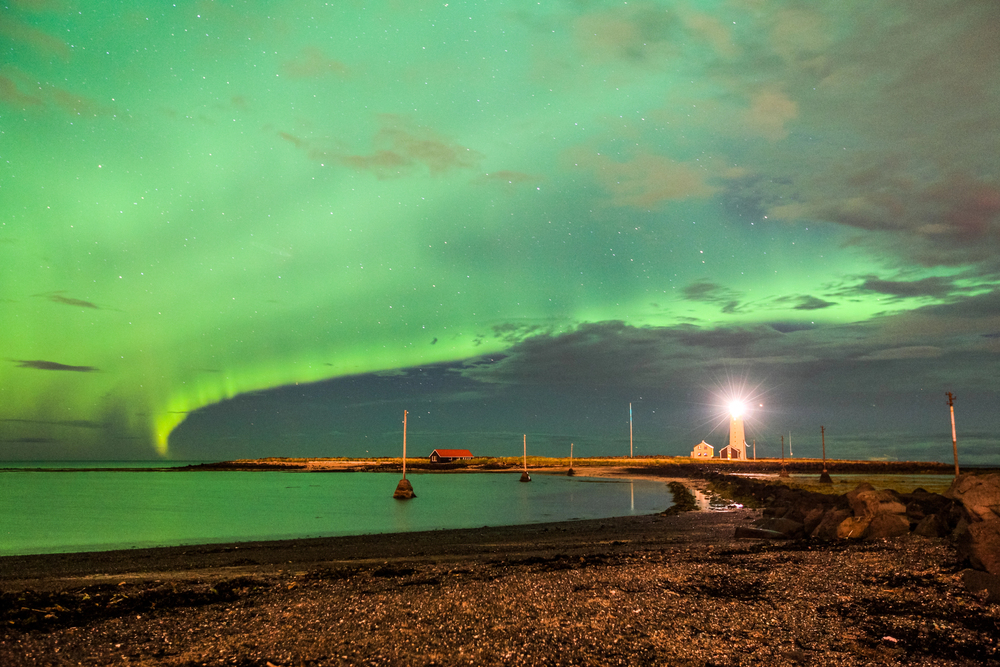
This coastal lighthouse on Seltjarnarnes Peninsula offers convenient stargazing just outside Reykjavik. The geothermal foot bath nearby provides a warm retreat during winter aurora watching—because frozen toes definitely don’t enhance the cosmic experience. The lighthouse beam creates interesting photographic opportunities when combined with celestial displays.
Despite its proximity to the capital, light pollution remains surprisingly low. The coastal setting eliminates southern horizon obstructions.
Snæfellsjökull National Park
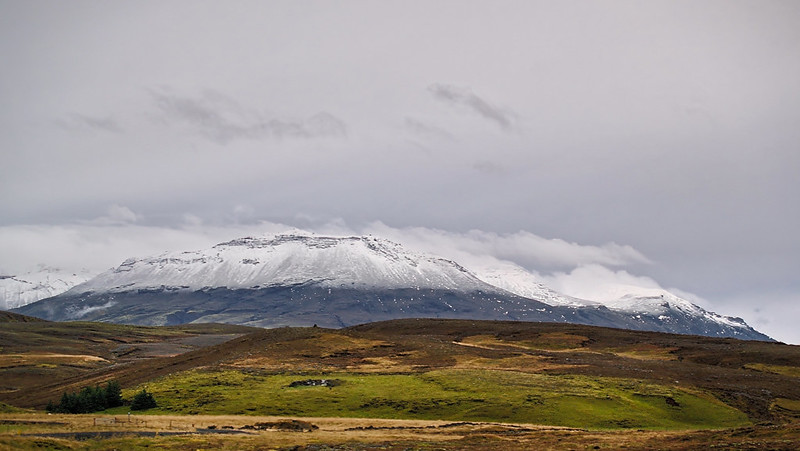
The glacier-capped stratovolcano that inspired Jules Verne creates a mystical backdrop for night sky observation. The park’s dark sky is renowned for its dark skies, with limited light pollution enhancing astronomy conditions. Multiple access points around the peninsula provide varied viewing perspectives.
And yes, the glacier does glow faintly under starlight. The volcanic landscape adds an almost alien quality to the stargazing experience.
Landmannalaugar
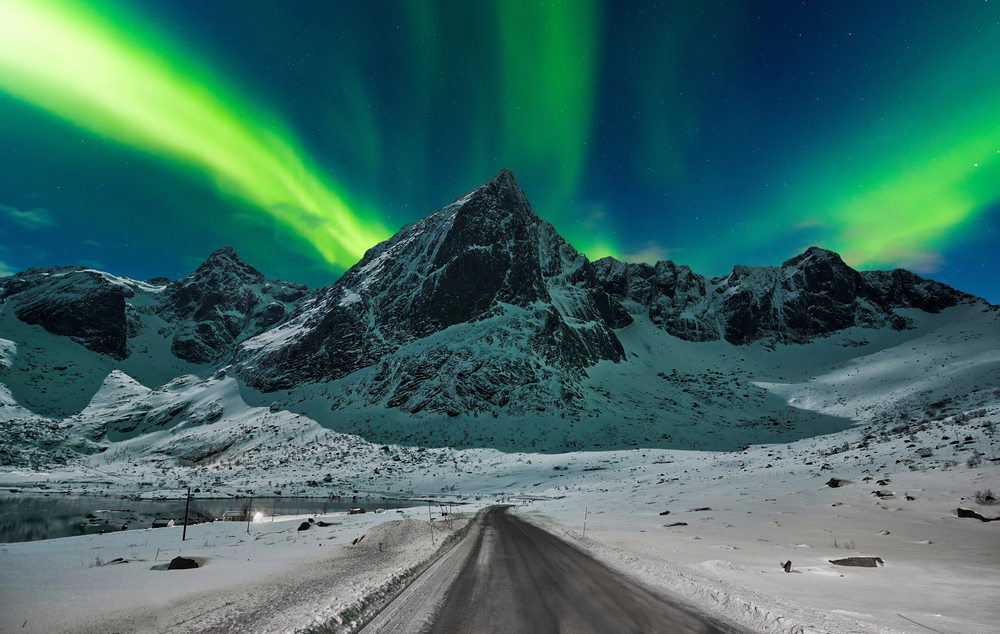
These colorful rhyolite mountains in the Highlands become even more dramatic under star-filled skies, transforming from their famous rainbow hues into mysterious silhouettes against the cosmic backdrop. The remote location requires 4WD access but rewards visitors with virtually zero light pollution. Natural hot springs provide welcome warmth during extended viewing sessions.
Summer camping here offers midnight astronomy under the brief darkness window. The multicolored peaks create a unique foreground unlike anywhere else on the planet.
Reynisfjara Black Sand Beach
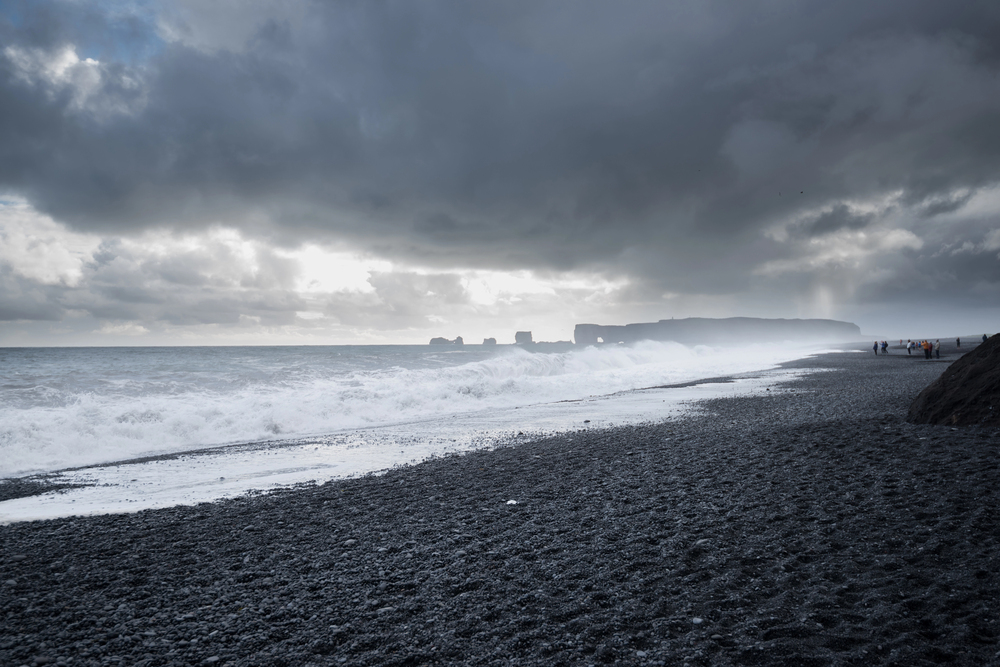
The famous black volcanic beach near Vík creates stark contrasts when northern lights appear above its basalt sea stacks. The Reynisdrangar rock pillars form distinctive silhouettes against the aurora. Powerful Atlantic waves add dramatic sound effects to the visual spectacle.
Wind can be intense here. Still, the trade-off is unobstructed ocean views and some of Iceland’s most photogenic aurora displays.
Diamond Beach
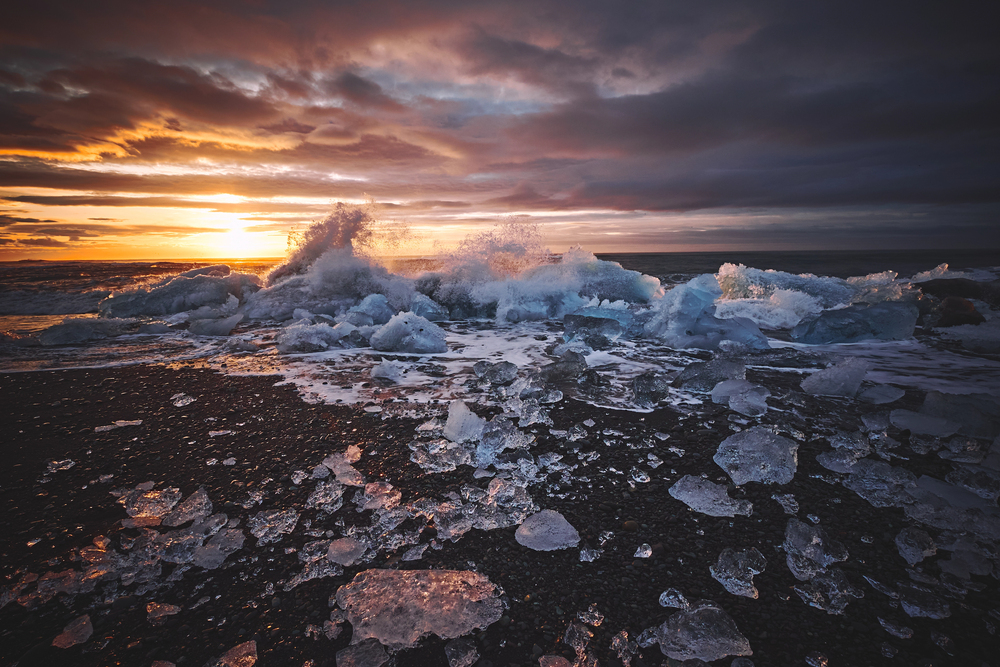
Glacier chunks washed ashore from Jökulsárlón create a sparkling foreground for night photography just across Route 1. The black sand contrasts beautifully with both white ice and green aurora. Each iceberg’s unique shape provides endless composition possibilities.
The ice shifts constantly with tides and weather. No two visits yield identical photographic opportunities.
Þórsmörk Valley
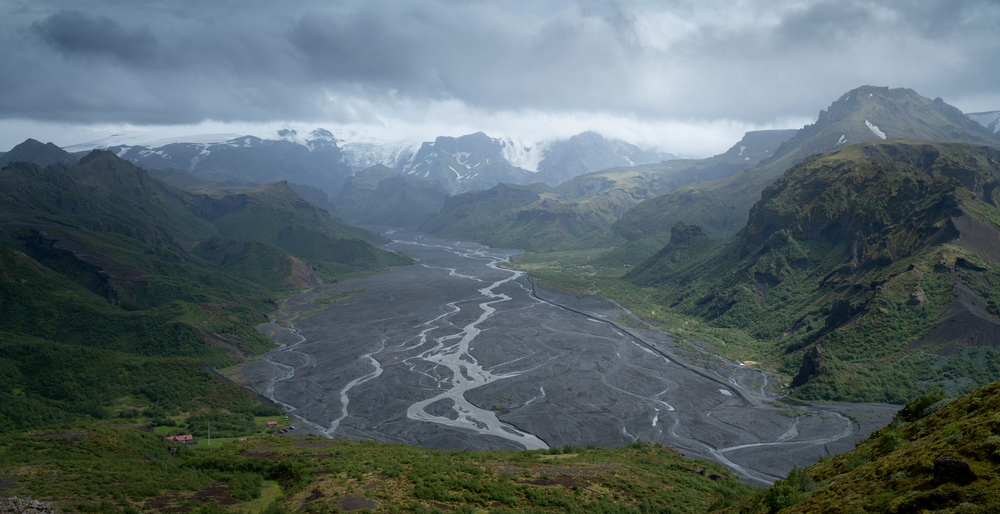
This highland oasis between three glaciers offers protected viewing in Iceland’s interior wilderness. The valley’s sheltered position provides wind relief while maintaining dark sky conditions. River crossings limit access to summer months and 4WD vehicles.
Arctic foxes occasionally wander through campsites here. The combination of wildlife and astronomy creates memorable wilderness experiences that feel like something from a nature documentary.
Vatnajökull National Park viewpoints
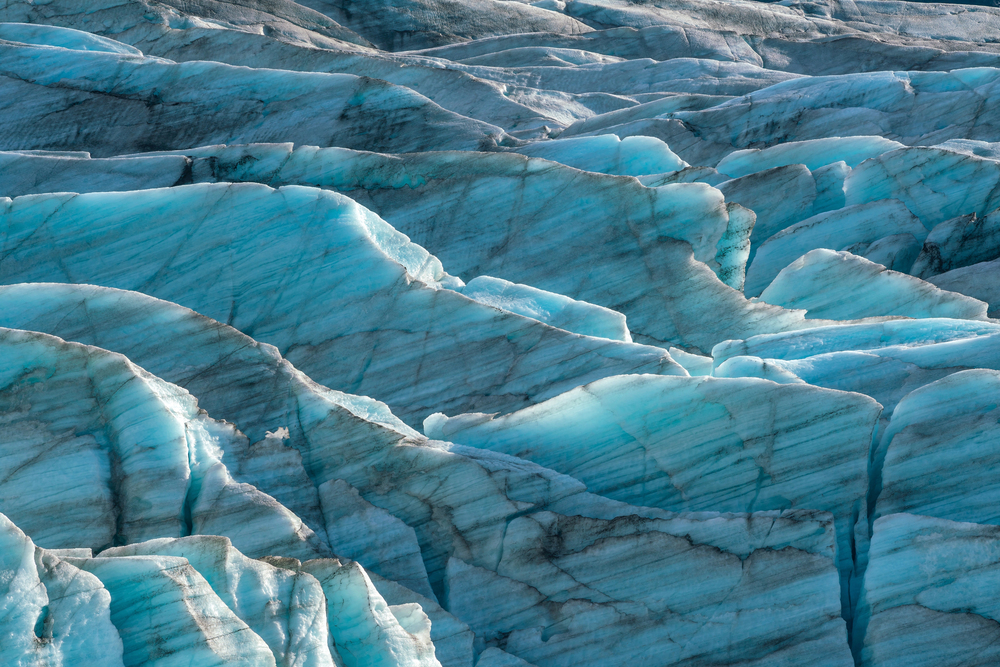
Europe’s largest glacier provides numerous stargazing locations along its perimeter. The park’s vast scale means finding isolated spots away from any light sources. Glacier tongues create dramatic foreground elements for aurora photography.
Ice caves accessible in winter add another dimension to the experience. Some visitors combine underground ice exploration with above-ground astronomy. Talk about covering all the bases.
Ellidaardalur Valley
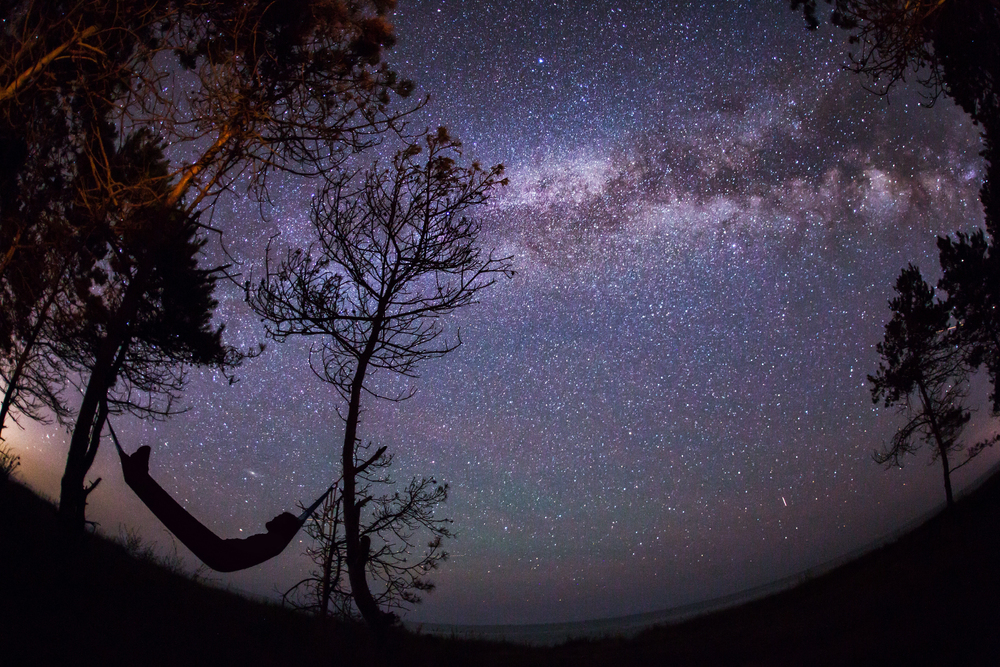
This green space within greater Reykjavik offers surprising darkness despite its urban location. The valley’s trees and terrain block much city light, creating a pocket of relative darkness. It’s easily accessible by car from downtown accommodations.
Not the darkest spot in Iceland, obviously. Even so, it’s definitely convenient for travelers staying in the capital who want quick access to decent stargazing.
Skaftafell National Park

Skaftafell, a region of Vatnajökull National Park, offers exceptional stargazing beneath Iceland’s highest peaks. The park’s location between massive glaciers creates a natural amphitheater for night sky viewing. Well-maintained facilities and camping areas make extended astronomy sessions comfortable.
The park’s elevation and inland position provide exceptionally clear air. Svartifoss waterfall nearby adds a striking foreground element for night photography when illuminated by starlight.
Highland F-roads viewpoints
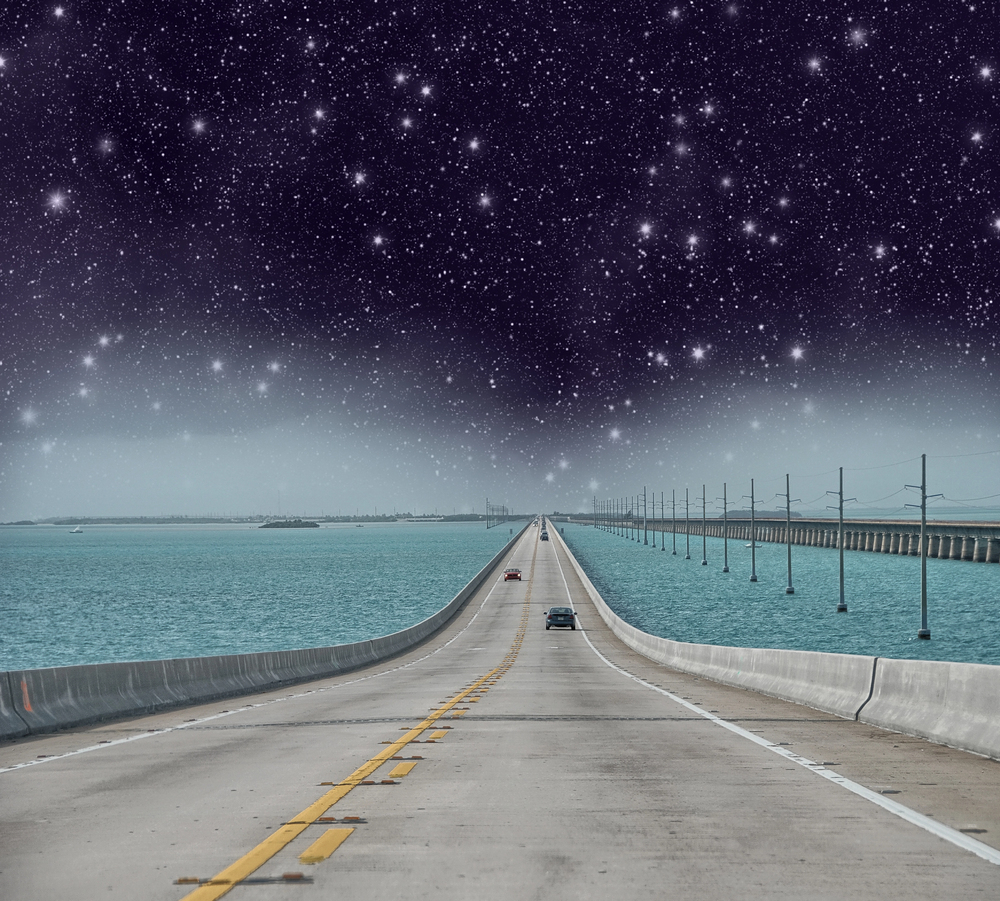
Iceland’s mountain roads lead to countless unnamed locations perfect for astronomy. These high-elevation spots provide crystal-clear air and expansive horizon views. Summer access only, but the brief darkness window still offers excellent Milky Way photography.
Options include:
- Sprengisandur plateau routes
- Kjölur highland crossing
- Kaldidalur mountain pass
- Various glacier access roads
GPS coordinates become essential here since landmarks are sparse. Really sparse.
Under Iceland’s infinite sky
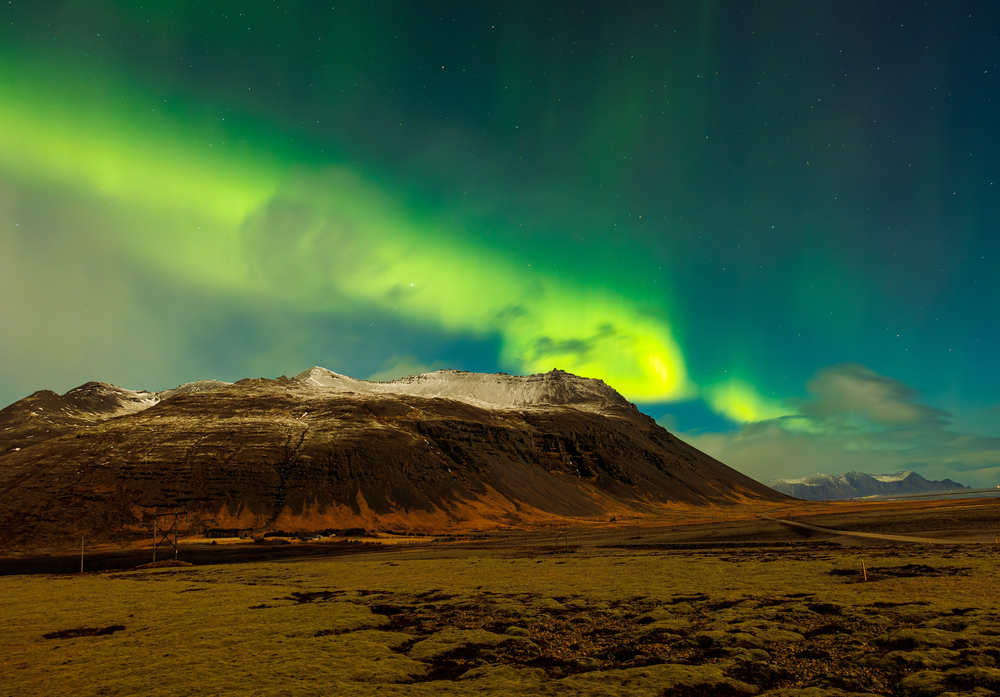
The real magic happens when you realize that almost anywhere in Iceland—away from towns and with clear weather—transforms into a world-class stargazing destination. This island nation’s unique position between continental plates, beneath the aurora oval, creates conditions that turn every dark hillside into a window to the universe.
More from Travel Pug

- 20 Best Beach Towns in the Carolinas
- 13 Destinations Where Tourists Regularly Regret Their Trip
- 20 Things You Actually Get in First Class
- 20 Small Airports With Aviation Museums
- 20 Places in the U.S. That Are Perfect for a Reset Trip
Like Travel Pug’s content? Follow us on MSN.
